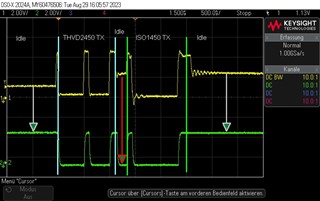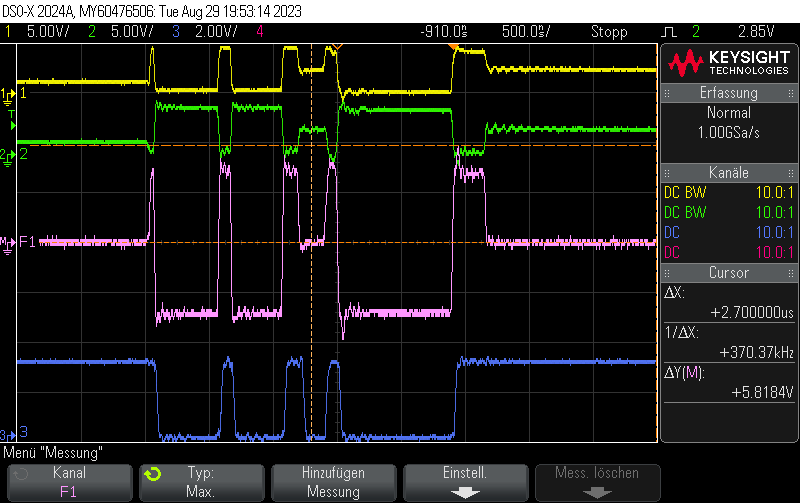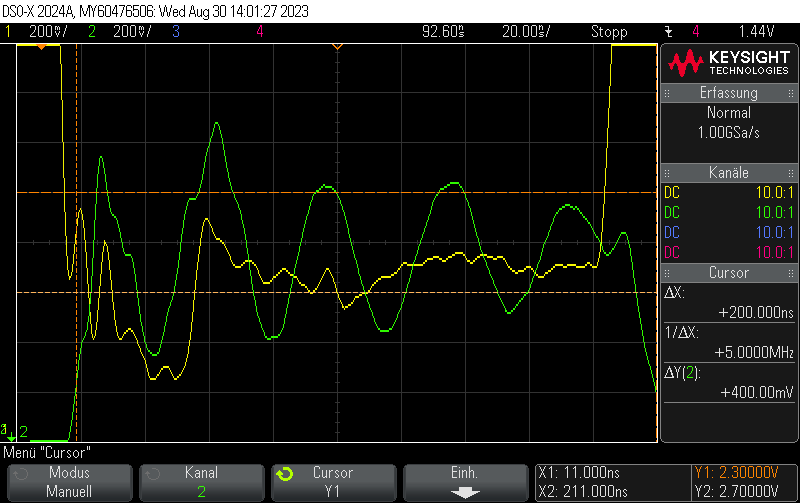Other Parts Discussed in Thread: ISO1450, , THVD1550, THVD1450, THVD1424
Hi,
I am using the THVD2450DRBR at a 1-to-1 RS485 connection. The receiving part is an ISO1450, both ends terminated with 120R, cable length around 4m, 10Mbit bitrate. Usually the THVD2450 sends a message and the ISO1450 replies to it. However, I have seen cases where during the bus turnaround - when the bus is idle - the R output on the THVD2450 goes low where it should be high according to the datasheet.

Yellow: Pin A, Green: Pin R
The idle bus detection before and after the Message works fine.



